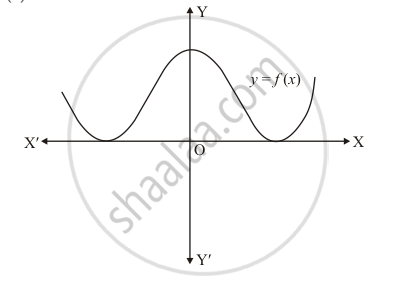Topics
Number Systems
Real Numbers
Algebra
Polynomials
Pair of Linear Equations in Two Variables
- Introduction to linear equations in two variables
- Graphical Method
- Substitution Method
- Elimination Method
- Cross - Multiplication Method
- Equations Reducible to a Pair of Linear Equations in Two Variables
- Consistency of Pair of Linear Equations
- Inconsistency of Pair of Linear Equations
- Algebraic Conditions for Number of Solutions
- Simple Situational Problems
- Pair of Linear Equations in Two Variables
- Relation Between Co-efficient
Quadratic Equations
- Quadratic Equations
- Solutions of Quadratic Equations by Factorization
- Solutions of Quadratic Equations by Completing the Square
- Nature of Roots of a Quadratic Equation
- Relationship Between Discriminant and Nature of Roots
- Situational Problems Based on Quadratic Equations Related to Day to Day Activities to Be Incorporated
- Application of Quadratic Equation
Arithmetic Progressions
Coordinate Geometry
Lines (In Two-dimensions)
Constructions
- Division of a Line Segment
- Construction of Tangents to a Circle
- Constructions Examples and Solutions
Geometry
Triangles
- Similar Figures
- Similarity of Triangles
- Basic Proportionality Theorem (Thales Theorem)
- Criteria for Similarity of Triangles
- Areas of Similar Triangles
- Right-angled Triangles and Pythagoras Property
- Similarity of Triangles
- Application of Pythagoras Theorem in Acute Angle and Obtuse Angle
- Triangles Examples and Solutions
- Concept of Angle Bisector
- Similarity of Triangles
- Ratio of Sides of Triangle
Circles
Trigonometry
Introduction to Trigonometry
- Trigonometry
- Trigonometry
- Trigonometric Ratios
- Trigonometric Ratios and Its Reciprocal
- Trigonometric Ratios of Some Special Angles
- Trigonometric Ratios of Complementary Angles
- Trigonometric Identities
- Proof of Existence
- Relationships Between the Ratios
Trigonometric Identities
Some Applications of Trigonometry
Mensuration
Areas Related to Circles
- Perimeter and Area of a Circle - A Review
- Areas of Sector and Segment of a Circle
- Areas of Combinations of Plane Figures
- Circumference of a Circle
- Area of Circle
Surface Areas and Volumes
- Surface Area of a Combination of Solids
- Volume of a Combination of Solids
- Conversion of Solid from One Shape to Another
- Frustum of a Cone
- Concept of Surface Area, Volume, and Capacity
- Surface Area and Volume of Different Combination of Solid Figures
- Surface Area and Volume of Three Dimensional Figures
Statistics and Probability
Statistics
Probability
Internal Assessment
Notes
Before we start with the introduction let us try to recall what we studied earlier about Polynomials.
1) Polynomials in one variable and their degrees. Eg `x^2+x^5+x^3+x` is polynomial in one variable i.e. variable x. And the degrees here are 2, 5, 3, 1.
2) If p(x) is a polynomial in x, highest power of x in p(x) is called degree of p(x). Take the example, here the degree of polynomial is 5, because 5 is the highest degree in p(x).
3) A polynomial of degree 1 is called a linear polynomial. Eg. x+4 is a linear polynomial as the highest degree here is 1.
4) A polynomial of degree 2 is called a quadratic polynomial. `x^2-9` is a example of Qadratic Polynomial, as 2 is the highest degree.
5) A polynomial of degree 3 is called a Cubic Polynomial. For example `x^3+5x+11` is Cubic Polynomial sicnce the highest degree is 3.
6) If p(x) is a polynomial in x, and if k is any real number, then the value obtained by replacing x by k is p(x), is called the value of p(x) at x=k, and is denoted by p(k). For example, `p(x)=x^3+1` if x=4 then `p(4)=4^3+1= 64+1= 65`
7) A real number k is said to be a zero of a polynomial p(x), if p(k)=0. Let's take a example, if `p(x)=x^3-8`, and x=2 the `p(2)= 2^3-8= 8-8= 0`. Thus any value of x that makes p(x) as 0 that is called zeros of polynomial.
Now let us understand more about Polynomials through a real life example, Manav works at three differen places to earn more money in a day. The employer at the first place pays him 2x as salary where x is the number of hours he work. At the second place Manav is paid with `x^2` while at the third place he earns `x^3`. So the total amount of money is represented as p(x) and `p(x)= 2x+x^2+x^3`
Here in this example we have only one variable i.e x
Video Tutorials
Shaalaa.com | Polynomials , Ex 2.1 Q1
Series:
00:02:36 undefined
00:06:15 undefined
00:04:39 undefined
00:05:11 undefined
00:03:52 undefined
00:04:09 undefined
00:03:55 undefined
00:09:22 undefined
00:05:47 undefined
00:02:14 undefined
00:02:38 undefined
00:11:07 undefined
00:03:49 undefined
00:05:03 undefined
00:03:08 undefined
00:03:55 undefined
00:04:49 undefined
00:03:49 undefined
00:07:26 undefined
00:04:38 undefined
00:03:57 undefined
00:07:59 undefined
00:05:20 undefined
00:02:30 undefined
00:04:43 undefined
00:08:13 undefined
00:08:03 undefined


